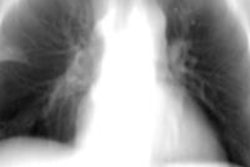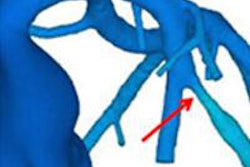Thursday, December 5 | 12:45 p.m.-1:15 p.m. | LL-CHS-TH1B | Lakeside Learning Center
Dual-energy subtraction digital tomosynthesis (DES-DT) can facilitate the detection of pulmonary nodules, according to research from Japan in this poster presentation.Tsutomu Gomi, PhD, and colleagues compared DES-DT with dual-energy subtraction radiography (DES-R) for detecting pulmonary nodules; MDCT images were used as a reference. All 36 patients with 36 pulmonary nodules received both exams.
The detection ability of DES-DT was significantly better than that of DES-R based on receiver operator characteristics (ROC) analysis. Sensitivity was 87.7% ± 2.9% for DES-DT and 53.8% ± 3.5% for DES-R, while specificity was 78.3% ± 5.6% for DES-ST and 78.4% ± 3.4% for DES-R. Accuracy, meanwhile, was 83.1% ± 3.8% and 66.1% ± 2.0% for DES-DT and DES-R, respectively.
When nodules were no longer superimposed over normal structures, their characteristics and distribution in the pulmonary nodules could be seen much more clearly, according to the group.
DES-DT provides greater sensitivity for detecting pulmonary nodules, particularly for larger ones, Gomi and colleagues concluded.



















